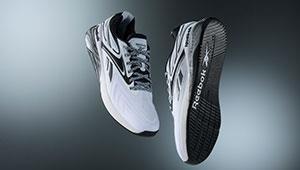
For being the key to weight loss, your metabolism is incredibly simple. It's just all of the chemical processes in your body added up. So the higher your metabolism, the more calories you burn. And while your metabolic rate is influenced by genetics, your workout can really rev it up big time.
More: 5 Tips to Speed Up Your Metabolism
Exercise can increase your metabolism in three ways:
- It burns calories during the workout session.
- It burns additional calories directly following the workout session, which is known as the after-burn affect. This post-exercise metabolic boost can last 24 to 48 hours.
- It increases calorie-burning lean muscle mass. One pound of muscle burns an extra six to 50 calories a day.
More: 6 Ways to Increase Metabolism and Lose Weight
But when it comes to boosting your metabolism, not all exercise is created equal. Here, how you should prioritize your workouts to get your metabolism humming:
#1 Choice: Strength Training
Lifting weights will boost your metabolism in all three ways and should be your first priority if you really want to burn more fat more easily. Have you ever noticed that men can lose weight by cutting out their nightly ice cream while women have to count calories like crazy before the scale will even budge? That's because men tend to have more metabolically active muscle than women. Complete a total-body strength-training program two to three days a week to build significant lean muscle mass and boost your metabolism, even if you're cutting calories.
More: Tips for Smart Strength Training
#2 Choice: Interval Training
This type of cardio workout, in which you push your exercise intensity for a short period of time and then recover, will burn calories during exercise as well as give you an after-burn effect. In one study comparing the effects of 15 weeks of interval training with 20 weeks of steady-state endurance training, researchers found that the participants who completed interval workouts lost nine times more fat than those who completed endurance workouts.
More: Drop Weight With Interval Training
#3 Choice: Steady State Endurance Cardio and Aerobics
When you hit the pavement, you burn calories during the run, but you don't get the benefit of an after-burn effect or of building muscle. And be careful: If you overdo it, you could actually end up losing muscle, which can slow your metabolism. In one study published in the International Journal of Sports Medicine, participants completed six long runs in seven days, after which the average weight loss was 6.1 percent. However, 5 percent of their weight loss came from lean mass and only 1.1 percent came from body fat. Stick to a little running, about 30 minutes on the days following your strength-training sessions, to help recover from your workouts without burning through muscle.
More: 3 Fast Cardio Workouts
 Sign up for a fitness class.
Sign up for a fitness class.
Get ACTIVE on the Go


Couch to 5K®
The best way to get new runners off the couch and across the finish line of their first 5K.
Available for iOS | Android







Discuss This Article